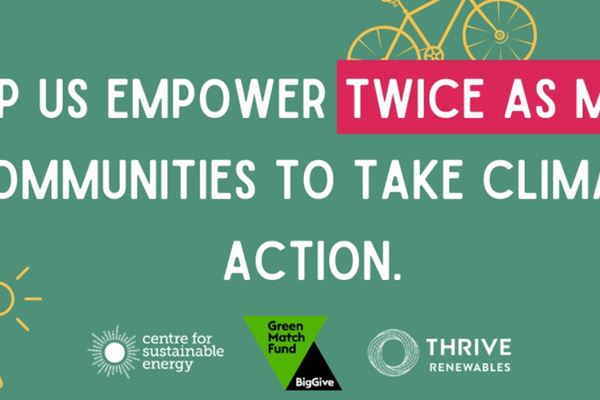Our portfolio of clean energy projects generated 133,858 MWh of clean electricity in 2022, a 19% increase on 2021. That’s enough to power 38,147 average UK homes and deliver emissions reductions equivalent to 58,314 tCO2e.
The increase was, in part, due to higher levels of wind in 2022, with our 13 onshore wind projects responsible for producing over 90% of total generation for the year.
In fact, National Grid ESO reported that wind farms contributed a record 26.8% of the country’s electricity in 2022, with a new milestone for wind generation set on 30 December, when 20.91 GW were produced by the UK’s fleet of onshore and offshore turbines. The ESO also said a new record was set for the share of electricity on the grid coming from zero-carbon sources, which supplied 87.2% of total power on the same date.
As a result of strong generation from wind and solar, the UK also saw substantial carbon emissions reductions in 2022, with new analysis from Carbon Brief finding that greenhouse gas emissions fell by 3.4% in total.
“It’s great to see not only a positive year for generation across Thrive’s portfolio, but for the UK more widely as strong wind resource helped to deliver new records. While we appreciate that the clean energy system of the future must be made up of a number of complimentary low-carbon sources, it’s more important than ever for the UK to harness the full potential of our abundant wind resource.
“In particular, onshore wind is one of the cheapest, cleanest and quickest technologies to deploy. We expect the government to reveal the findings of its consultation into onshore wind planning in the coming months and hope that they will level the playing field and treat onshore wind in the same way as other infrastructure projects, especially as we need to see significant scale up of deployment if we’re to meet net zero by 2050.” - Matthew Clayton, Managing Director, Thrive Renewables
According to Regen and National Grid ESO’s study ‘A Day in the Life’, we need 35 GW of onshore wind by 2035 to meet net zero. The government’s recent consultation, which was seeking viewpoints on proposed changes to the National Planning Policy Framework, will determine the future of onshore wind in England, after a 2015 amendment made it almost impossible to build new projects. By removing the amendment and returning to the levels of deployment that were being achieved prior to 2015, the UK would be able to deliver cheaper bills for consumers, improve its energy independence, support new jobs and, ultimately, achieve net zero.
It was positive to see the government addressing repowering as part of the consultation and we look forward to receiving further clarification on this. Replacing England's aging wind turbines with more efficient models will help to produce more renewable electricity, which can then be used to complement new wind projects in delivering the capacity required for net zero. It is essential in the context of the global climate emergency and the UK’s decarbonisation efforts that we do not lose any of our existing onshore fleet.
In 2006, we successfully replaced 10 turbines with just 8 more modern and efficient machines at our Caton Moor wind farm in Lancashire. With two fewer turbines, and only a small increase in the height of each, output from the site was increased seven-fold to 47 million kWh of electricity per annum.



